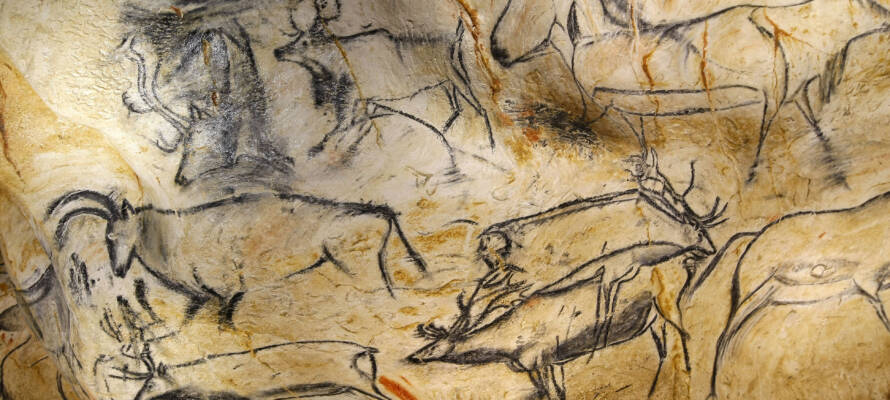The team’s hypothesis hinges on the disappearance of large animals in the Levant long before the arrival of modern humans.
By Pesach Benson, TPS
A team of researchers from Tel Aviv University have proposed a groundbreaking explanation for a century-old archaeological mystery: why Upper Paleolithic cave art, so prominent in Western Europe, is entirely absent in Israel and the Levant.
Their study suggests that the extinction of large animals in the region eliminated the need for prehistoric humans to depict them in shamanic rituals, which were commonly held deep within caves.
The findings, recently published in the peer-reviewed Journal of the Israel Prehistoric Society, suggest that early humans were not only aware of their dependence on large game but also their role in these animals’ extinction.
For over 100 years, archaeologists have puzzled over the absence of cave art in the Levant. The region is rich in caves and was inhabited by modern humans during the same period when Western European cave paintings were created, 30,000-35,000 years ago.
Despite extensive exploration, not a single cave painting has been found.
However, researchers from Tel Aviv University’s Jacob M. Alkow Department of Archaeology & Ancient Near Eastern Cultures argue that this absence cannot be attributed to a lack of artistic skill or knowledge.
“This is a century-old mystery in Israeli archaeological research,” said Professor Ran Barkai, one of the study’s authors.
“Israel has numerous caves that were occupied by humans during the same time period as the Aurignacian culture in Europe, yet not a single cave painting has been discovered. Moreover, evidence shows that the people in both regions were culturally and biologically similar, using similar tools and creating comparable artistic objects.”
The team’s hypothesis hinges on the disappearance of large animals in the Levant long before the arrival of modern humans.
The Role of Large Game in Cave Art
The researchers suggest that the primary purpose of cave paintings in Europe was shamanic ritual. Prehistoric Europeans, witnessing the decline of large, fat-rich animals like woolly mammoths and woolly rhinoceroses, ventured into caves to depict these creatures.
These paintings were likely part of spiritual practices aimed at appealing to entities perceived as inhabiting the underworld, asking for the restoration of these vital food sources.
“It’s important to understand that many cave paintings are found deep within caves, in places that are difficult and dangerous to access,” explained Prof. Ran Barkai.
“Indigenous societies today often perceive caves as gateways to the underworld, a source of abundance. By painting these animals, prehistoric humans were likely appealing to these entities for solutions to their survival crisis.”
In contrast, when Homo sapiens arrived in the Levant around 60,000 years ago, large animals such as elephants and rhinoceroses had already been hunted to extinction by earlier human species.
The absence of these creatures meant that prehistoric humans in the region had no need to perform rituals focused on their return.
Instead, they adapted to hunting smaller, faster animals, avoiding the existential crisis faced by their European counterparts.
While the migration of modern humans to Europe brought them into contact with large game populations, the subsequent decline of these animals created a sense of loss and anxiety.
This cultural upheaval is reflected in Europe’s elaborate cave art. In Israel, however, there was no such upheaval. Prehistoric humans encountered a landscape already devoid of large game and adapted their survival strategies accordingly.
This continuity, the researchers argued, eliminated the need for rituals involving cave paintings. “Their anxieties were different from those of their European counterparts, and so were their rituals,” Barkai said.
The findings also support a broader thesis about human awareness of their role in the extinction of large animals.
According to the researchers, prehistoric humans were conscious of their dependence on these creatures and the consequences of their disappearance.
The crisis of dwindling large game populations in Europe may have driven innovations in both art and spiritual practice.
“The missing cave paintings in Israel tell a story of survival, resilience, and cultural differences. It’s a testament to how humans respond to their environment and the crises they face,” said Barkai.
ANTISEMITISM IS SURGING, THREATENING JEWISH LIVES!
Join Six Million United Against Antisemitism!
We stand united against antisemitism and pledge to fight hatred and violence against the Jewish people and its institutions around the world.
Sign the petition - Declare 'Never Again is Now'!























